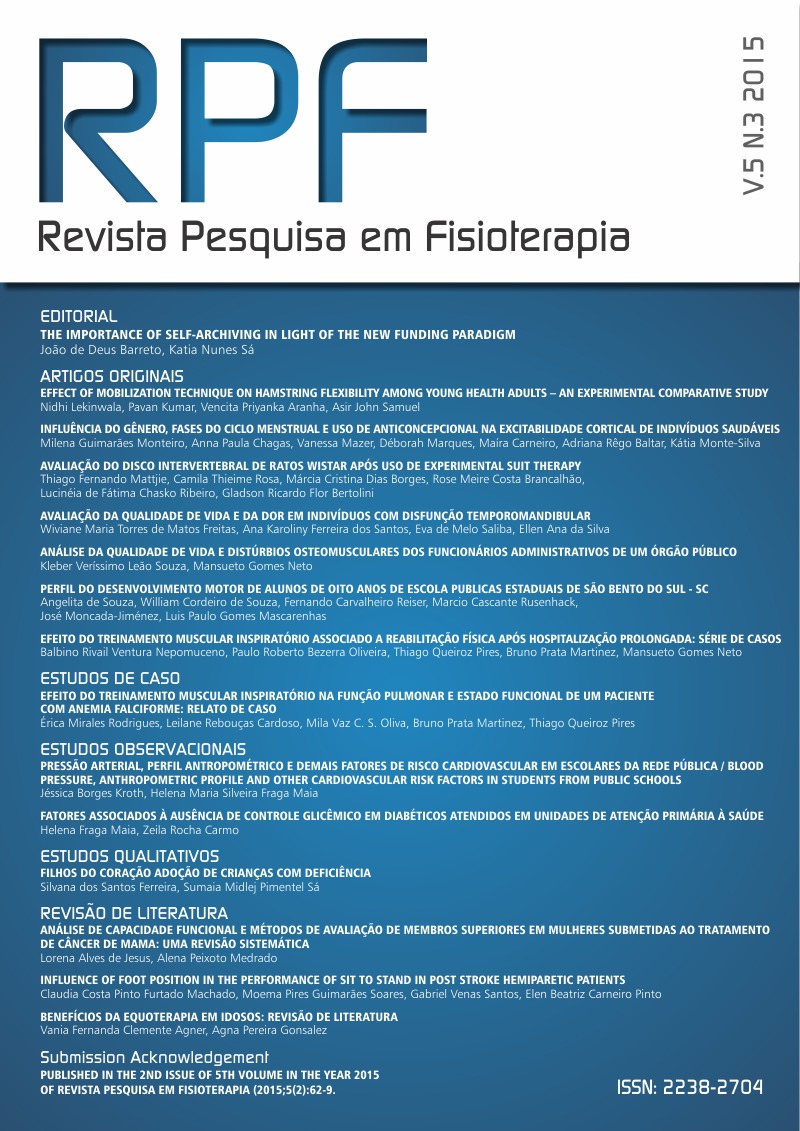EFFECT OF INSPIRATORY MUSCLE TRAINING ON LUNG FUNCTION AND FUNCTIONAL STATUS OF A PATIENT WITH SICKLE CELL DISEASE: CASE REPORT
DOI:
https://doi.org/10.17267/2238-2704rpf.v5i3.669Keywords:
Sickle cell anemia, Lung function, Inspiratory muscle trainingAbstract
Objective: This article reports the case of an adult diagnosed with sickle cell anemia (SCA) since adolescence, with a history of multiple hospitalizations over the years and dyspnea report during some activities of daily living. Case description: In the initial evaluation was obtained the maximal inspiratory pressure (MIP) and vital capacity (VC) through POWERbreathe® digital device K5 model (POWERbreathe International Limited, London, England), and baseline dyspnea index (BDI) during activities of daily living. After the diagnosis of inspiratory muscle weakness (MIP ?60% of predicted), it was suggested the realization of inspiratory muscle training (IMT) with an inspiratory resistor device linear load. The initial setting was charge with 65% of MIP, for 6 weeks, daily, with 30 breaths performed twice daily. At 21 and 42 days were carried out new evaluations of MIP and VC, the BDI being reevaluated in 42 days. After 21 days the program an increase of 13.8% was seen in MIP and 82.3% in the CV. Already at 42 days, it was observed plus a gain in MIP without changing the values of CV. Conclusion: In the analysis of BDI was found an increase of 7 to 12 points (71.4%), which features a no dyspnea patient to carry out the activities proposed by the instrument. It identified an improvement in muscle strength and improvement of dyspnea in daily activities after the TMI program in this case report.



